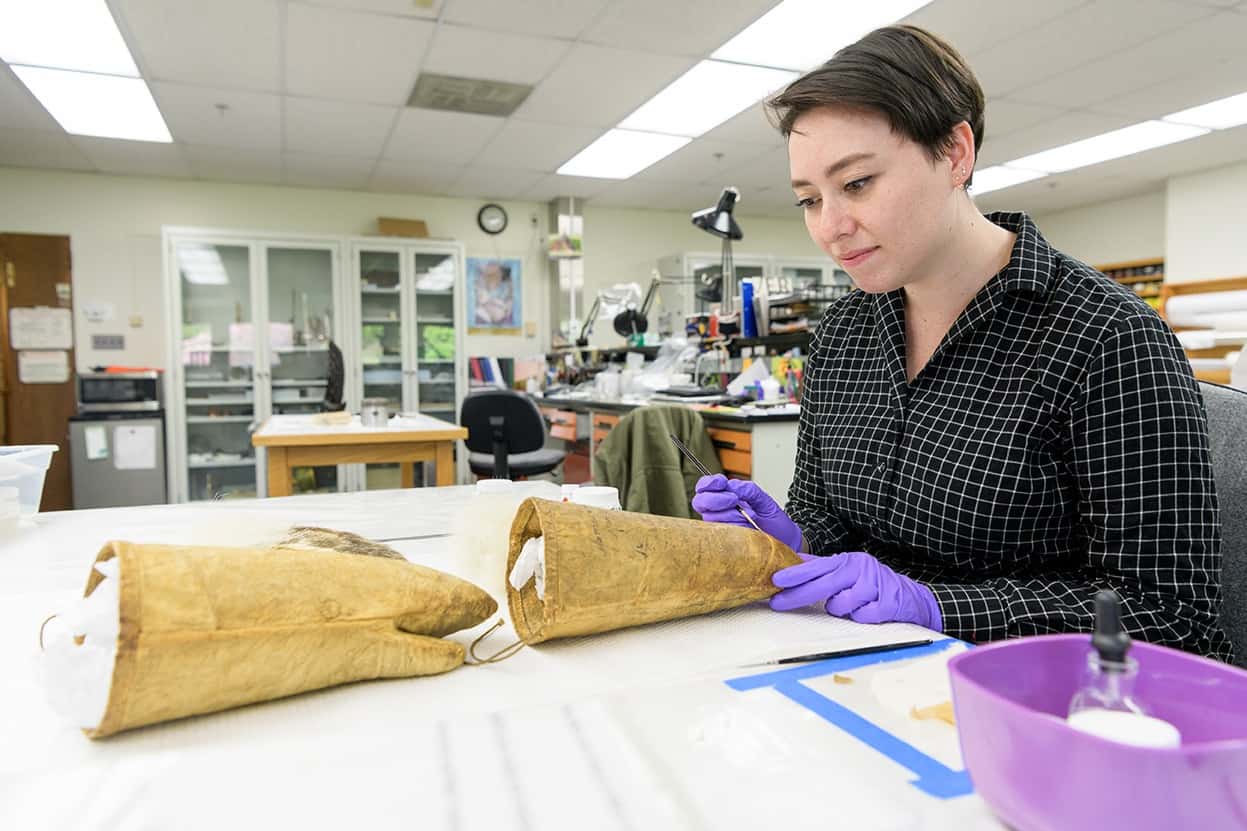 Research & Discovery
Research & Discovery
A Blog Devoted to UD Innovation, Excellence and Scholarship
Research & Discovery
A Blog Devoted to UD Innovation, Excellence and Scholarship
From the North Pole to UD
ABOVE: The mittens worn by Arctic explorer Matthew Henson sit on the workbench of Caitlin Richeson, a graduate student in the Winterthur/University of Delaware Program in Art Conservation. Richeson did a careful study of the materials and developed a plan of treatment that helped to stabilize and restore the shape and condition of the iconic mittens, while retaining distinctive marks of wear that they earned during their historic travels. | Photo by Evan Krape
UD student conserves mittens worn on 1909 expedition
The way Matthew Henson described it, the brutal cold that punishes those who dare to approach the North Pole is enough to turn a man’s flesh into something like hamburger.
“Freezing of the nose and the whole front of the face is an ordinary occurrence,” he wrote in 1910. “The skin keeps peeling off and freezing again until that part of the face is like raw beef and it leaves spots on the face like smallpox.”
Henson’s hobbling partner in exploration, Robert Edwin Peary, had lost nine of his 10 toes to frostbite on one expedition.
So the sealskin mittens Henson wore on April 6, 1909, when he and Peary and four Inuit guides reportedly became the first — there is continuing debate — to reach the North Pole, deserve a good bit of credit for keeping the brilliantly resourceful Henson alive.
Whether they were first or nearly first, Henson was without question the first African-American to sledge across the ever-shifting ice of the Arctic Sea and stand on top of the world, the truest north of all, where all directions point south.
The harsh conditions and the intervening century took their toll on the mittens, though. They were matted, rigidly creased and brittle in some places, compromised by insects in others.
Then they wound up in the hands of Caitlin Richeson, a student in the Winterthur/University of Delaware Program in Art Conservation, directed by UD’s Debra Hess Norris, the Unidel Henry Francis du Pont Chair in Fine Arts.
At Richeson’s workbench, they found new life.




